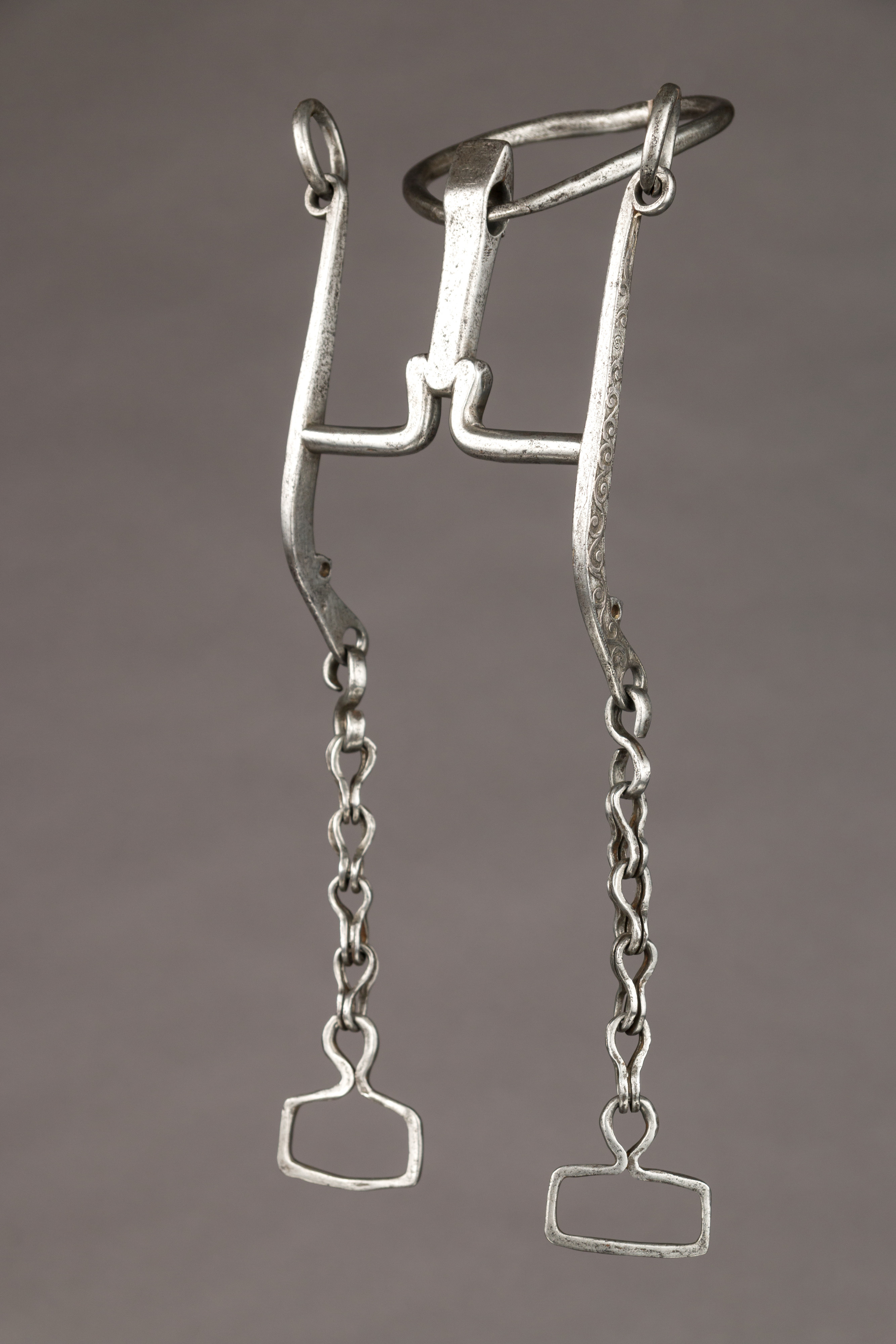Ring Bit
Not on view
The shanks of this elegant bit are adorned with vegetal scrolls inlaid with silver. The back of the T-shaped mouthpiece is inlaid with small silver stars as well as with a copper medallion bearing an inscription, possibly the maker’s or workshop’s name. Reins were attached to the chains hanging from the shanks.
The ring bit is a strong instrument distinguished by the fact that the curb chain is replaced by a ring attached at the top of the mouthpiece, going around the horse’s lower jaw. The ring would press the sensitive chin of the horse when the reins are pulled. Typical of the Islamic world, ring bits were introduced to Spain during the Arab presence, and then kept by the Spaniards for their light cavalry (used in the genette or jineta riding style). Brought into the New World during the Spanish conquest, they were also commonly used in many Latin American countries until the late 19th century.
This image cannot be enlarged, viewed at full screen, or downloaded.
This artwork is meant to be viewed from right to left. Scroll left to view more.




